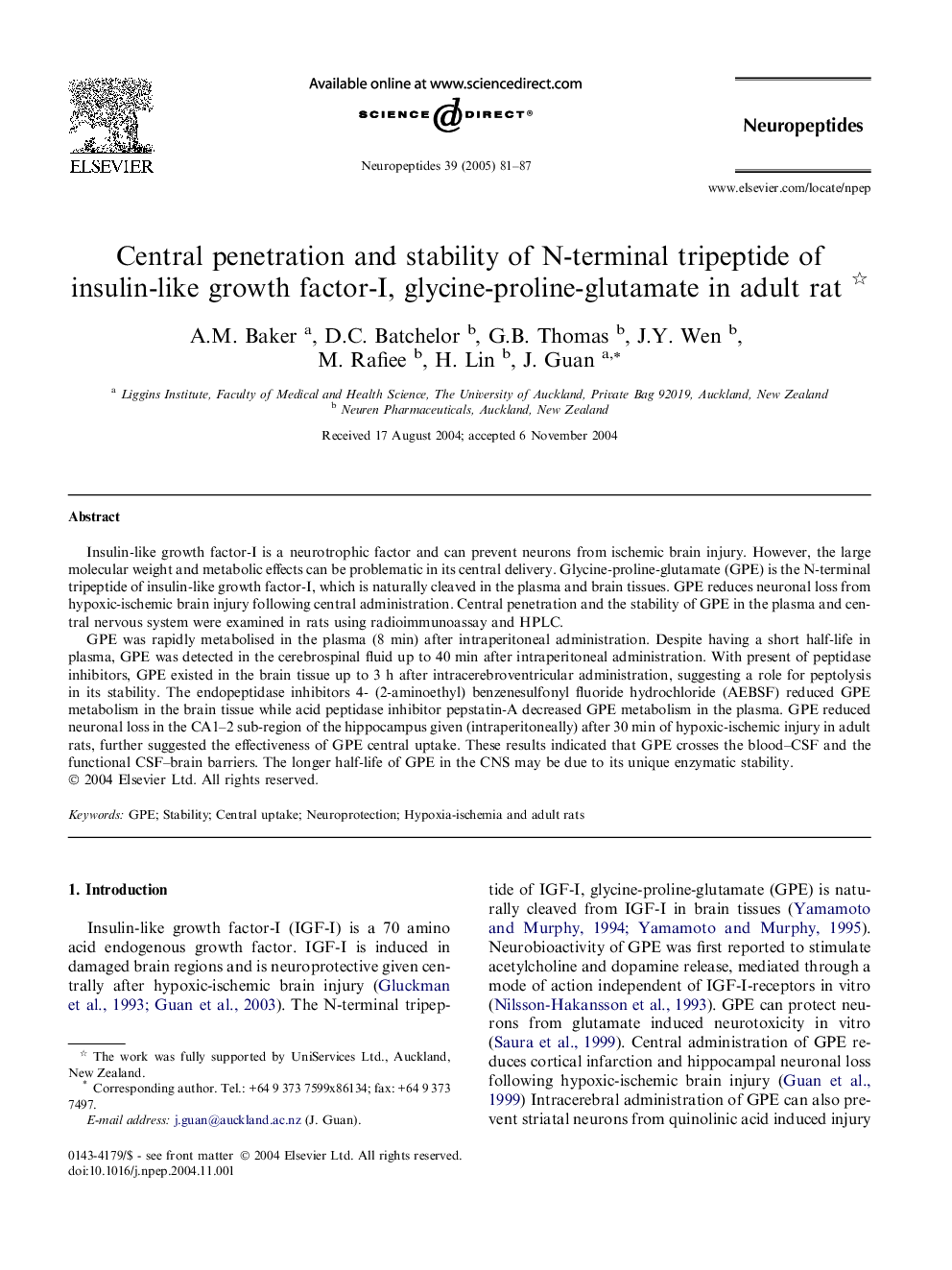| Article ID | Journal | Published Year | Pages | File Type |
|---|---|---|---|---|
| 9118726 | Neuropeptides | 2005 | 7 Pages |
Abstract
GPE was rapidly metabolised in the plasma (8 min) after intraperitoneal administration. Despite having a short half-life in plasma, GPE was detected in the cerebrospinal fluid up to 40 min after intraperitoneal administration. With present of peptidase inhibitors, GPE existed in the brain tissue up to 3 h after intracerebroventricular administration, suggesting a role for peptolysis in its stability. The endopeptidase inhibitors 4- (2-aminoethyl) benzenesulfonyl fluoride hydrochloride (AEBSF) reduced GPE metabolism in the brain tissue while acid peptidase inhibitor pepstatin-A decreased GPE metabolism in the plasma. GPE reduced neuronal loss in the CA1-2 sub-region of the hippocampus given (intraperitoneally) after 30 min of hypoxic-ischemic injury in adult rats, further suggested the effectiveness of GPE central uptake. These results indicated that GPE crosses the blood-CSF and the functional CSF-brain barriers. The longer half-life of GPE in the CNS may be due to its unique enzymatic stability.
Keywords
Related Topics
Life Sciences
Biochemistry, Genetics and Molecular Biology
Endocrinology
Authors
A.M. Baker, D.C. Batchelor, G.B. Thomas, J.Y. Wen, M. Rafiee, H. Lin, J. Guan,
